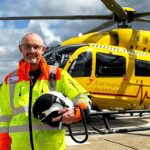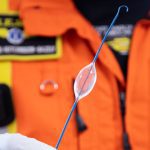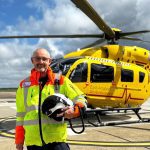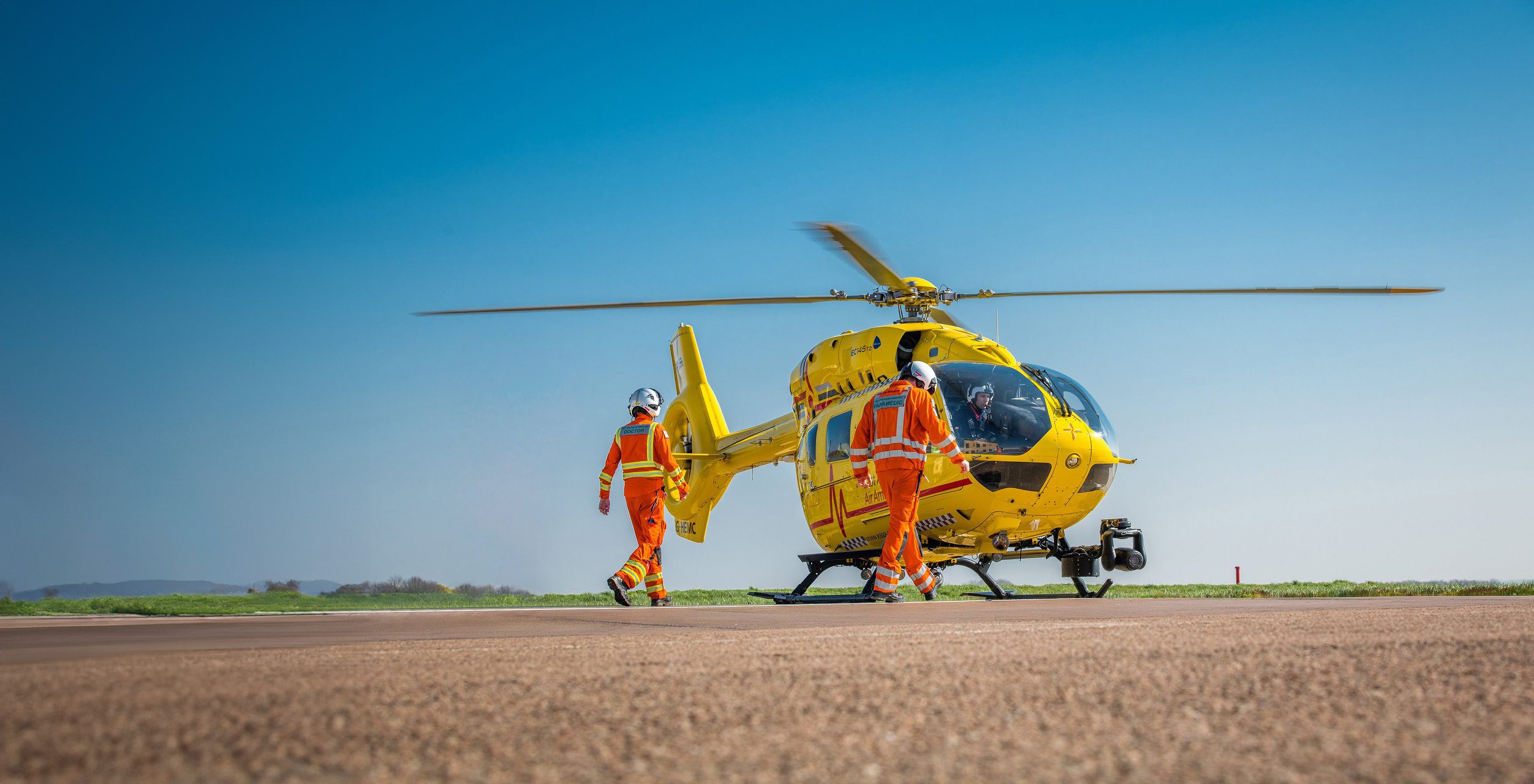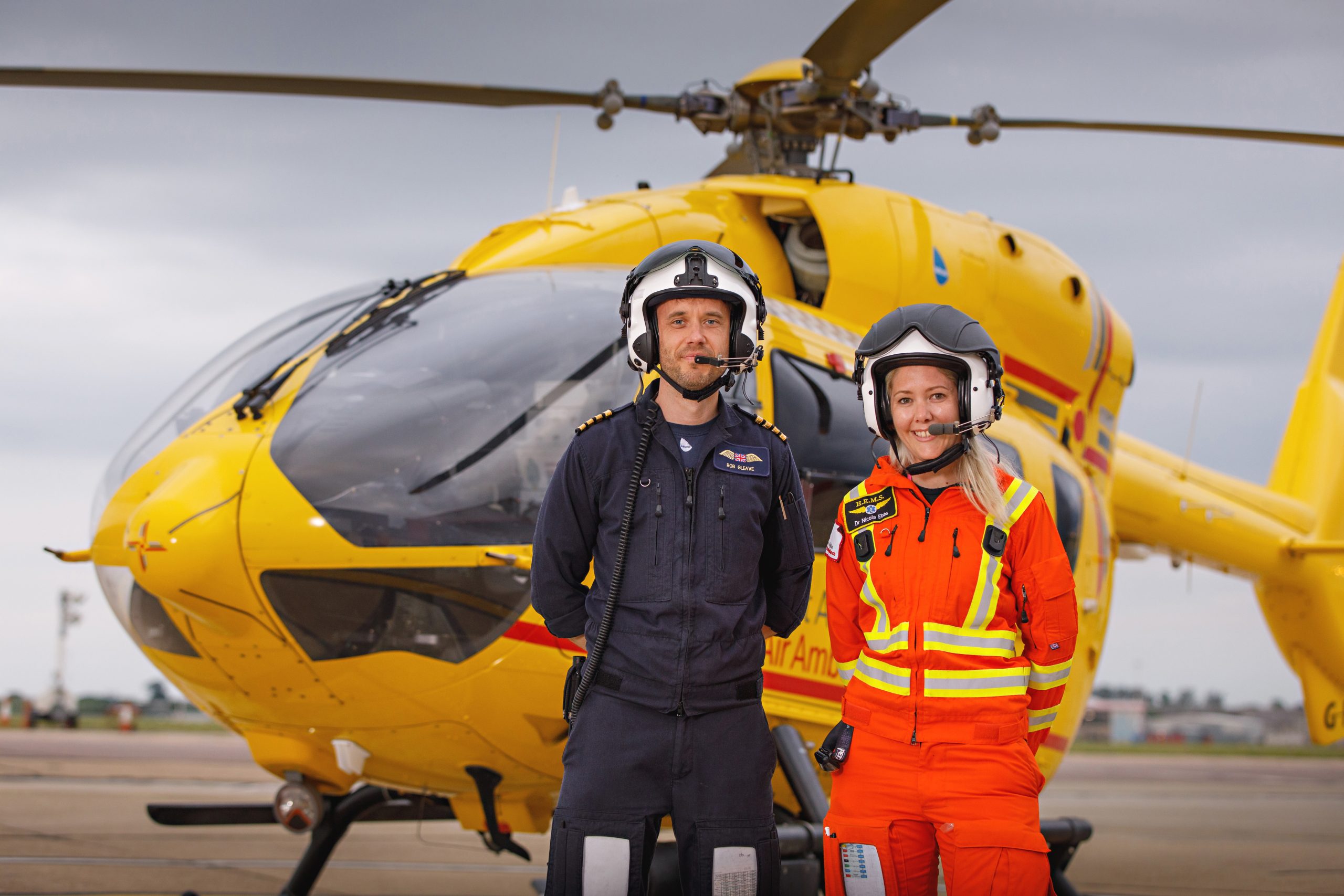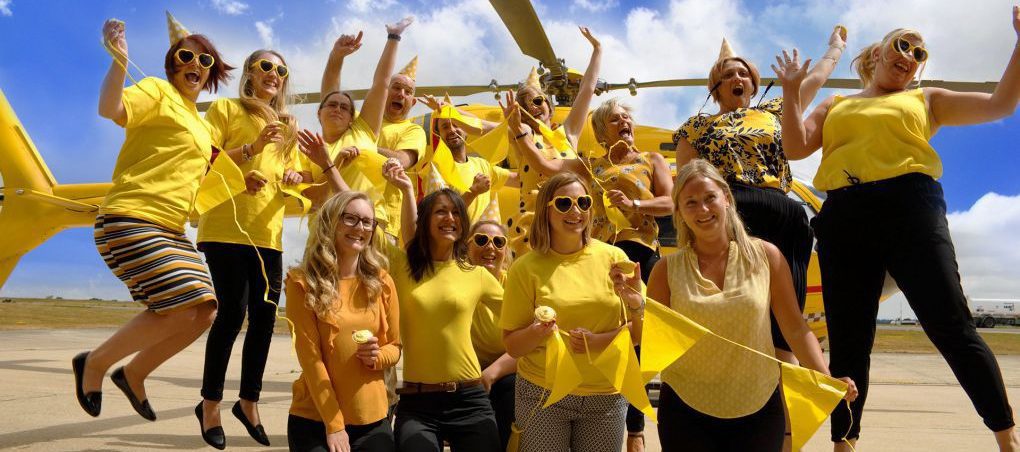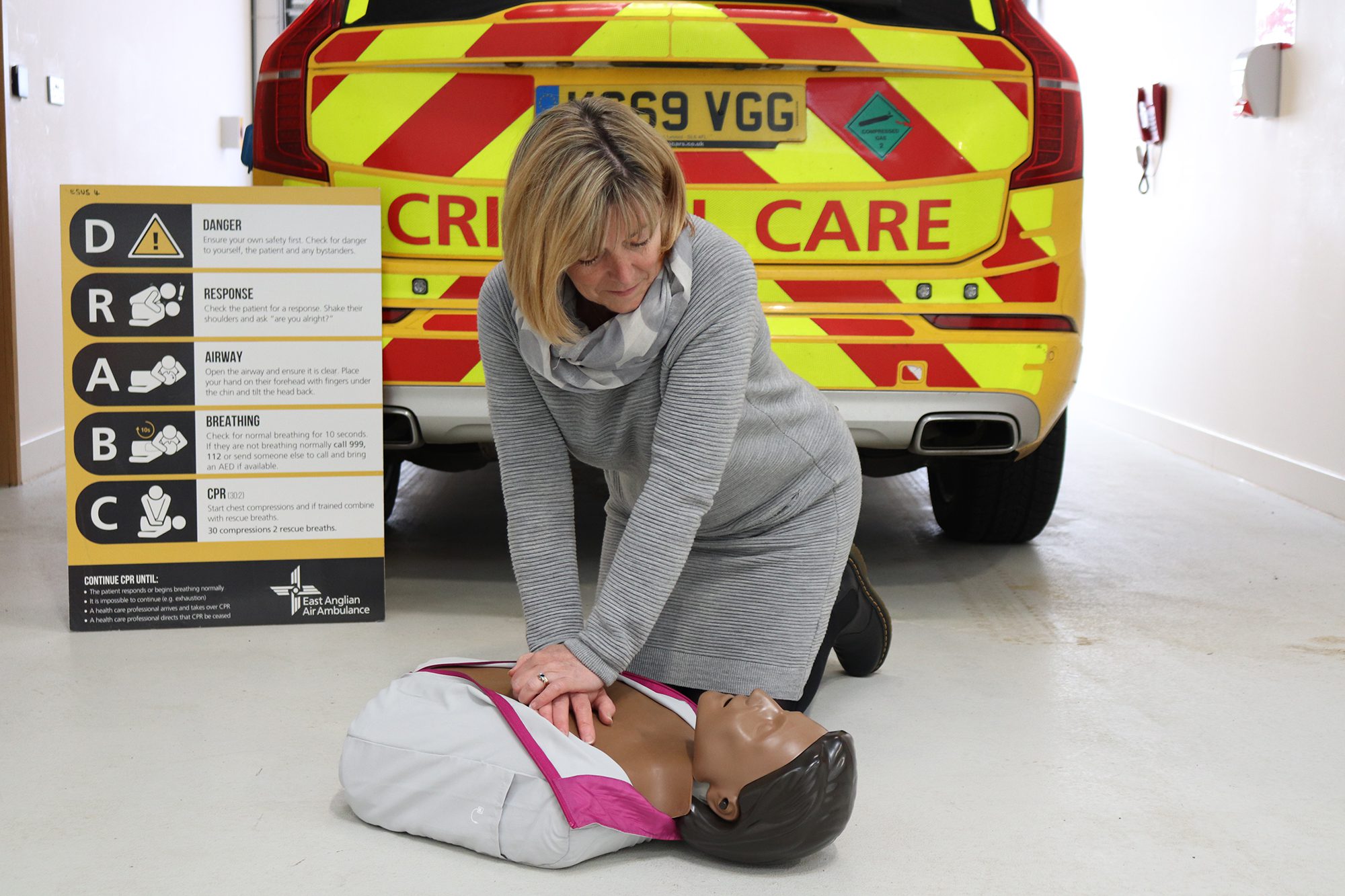17 Nov 2021
Wisbech farmer lucky to be alive after being accidentally impaled by forklift tine
Forty-two-year-old Jonathan Willis has thanked the emergency services and Addenbrooke's Hospital surgical teams who saved him last year, after he dodged death by mere millimetres when he was accidentally impaled by a forklift tine. The tine went in through his lower back and exited through his abdomen.
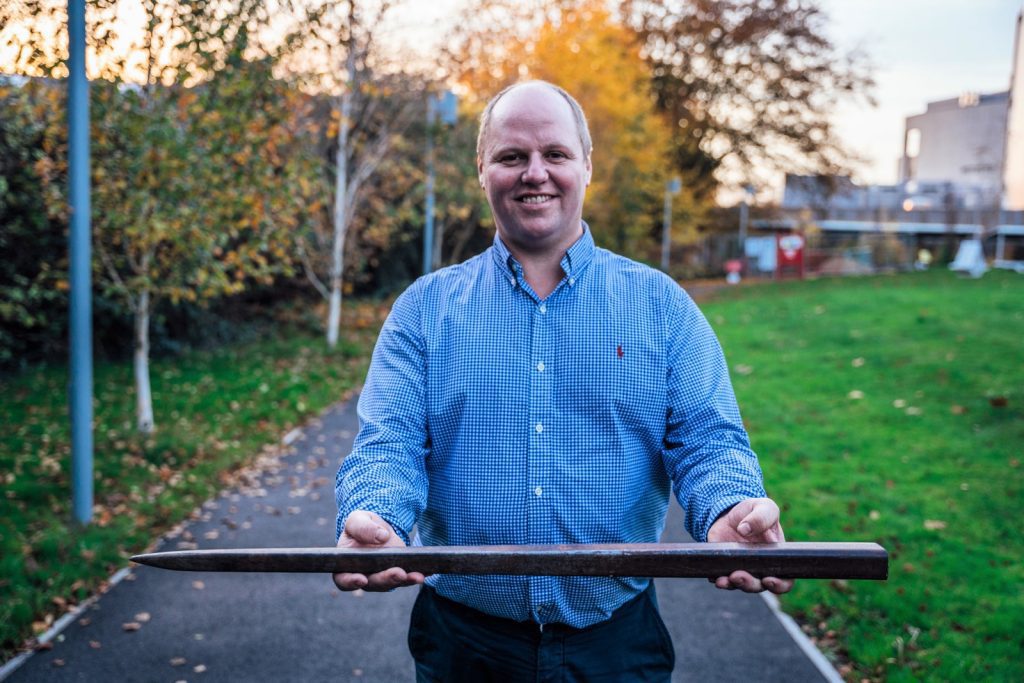
Above: Jonathan holding the tine a year later. Credit EAAA/Mark Logan.
Jonathan was working on his farm near Wisbech on 26 October 2020 when the accident happened. He had been unloading a trailer of straw bales when he got out of his forklift to untie some straps on the trailer. As he was standing between the forklift and the trailer, the forklift rolled forward and he became impaled on one of the tines, which had a sharp end to it to grab the straw bales. Jonathan quickly raised the alarm and his wife, Wendy, called 999 at 16:32.
VIDEO
Watch Jonathan’s story about how the accident happened (warning includes some real CCTV footage) and how the East Anglian Air Ambulance team worked with the fire and rescue, ambulance and police services to free Jonathan and get him safely to Addenbrooke’s Hospital to undergo life-saving surgery.
One year on from the accident, the Willis family have raised over £45,000 at a charity ball in aid of the East Anglian Air Ambulance (EAAA), to thank them for the part they played in Jonathan’s rescue and to help keep the charity in the air for those who need it.
Wendy Willis, Jonathan’s wife, said: “We know that without the enhanced skills of the air ambulance team that day Jonathan wouldn’t have made it to hospital. They took control of the situation, which was like living my worst nightmare, and made all the right decisions which got him to the right hospital and to the right surgeon with a fighting chance. We were then so incredibly lucky that Jonathan had one of the best surgeons in the country leading his operation. The Addenbrooke’s team quite literally worked miracles in the operating theatre that night and ensured that Jonathan came home to me and our five children in one piece.”
“What happened to me was just such an unusual accident and I’m just so, so thankful that there were so many expert teams available to help me get through it. Otherwise, I’m sure the outcome could have been very different. I will be eternally grateful to everyone involved in saving my life.”
Jonathan Willis
It’s only thanks to your donations that we were able to be there for Jonathan when needed. To be there for more people in their darkest hour, we need to raise £15 million a year to deliver and develop EAAA. Read on to find out more about Jonathan’s rescue, life-saving surgery and magnificent recovery.
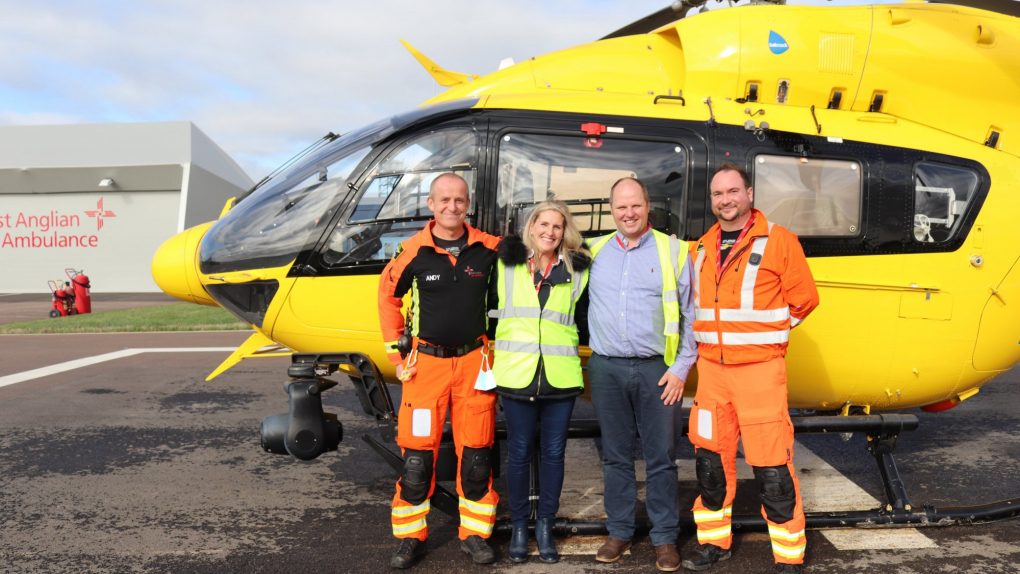
Expert care on the scene
Seven minutes after the 999 call was made, the EAAA team was tasked from Cambridge to provide enhanced pre-hospital emergency medicine at the scene, landing at the farm at 16:57.
The EAAA team worked with the ambulance, police and fire and rescue teams for around 45 minutes to assess Jonathan’s injuries and coordinate the complex extrication process to try and get Jonathan safely to hospital for life-saving surgery.
The forklift tine had entered through Jonathan’s lower back and exited through his abdomen, posing severe risk to several major internal organs and blood vessels, making this a time-critical and life-threatening situation.
Jonathan, who remained conscious throughout, had to be kept as still as possible while the steel forklift tine was cut with an angle grinder to release him from his trapped state. During this process his weight was supported on an ambulance trolley, and he required advanced pain relief in the form of ketamine to relieve the pain, without making him too drowsy. Moving even a small amount could have resulted in catastrophic bleeding. Jonathan was cut free around 45 minutes after the EAAA team arrived at the scene.
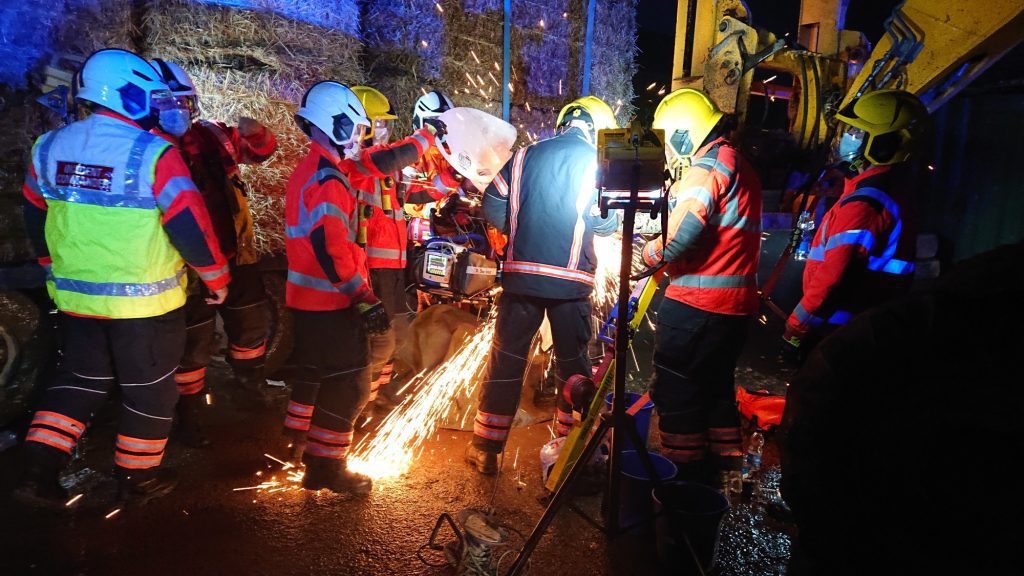
The length, weight and position of the tine, still in place, meant that Jonathan could not be safely transferred in the helicopter. EAAA Doctors James Hale and Nathan Howes and Critical Care Paramedic Andy Bates travelled with Jonathan in the ground ambulance for just over an hour to get him safely to Addenbrooke’s Hospital, where an expert surgical team was ready and waiting. Jonathan arrived at the Major Trauma Centre at 18:51, over two hours after his injury.
EAAA Consultant Dr Nathan Howes said:
“I have worked for East Anglian Air Ambulance since 2015, and frequently attend incidents involving trapped patients, but I had never been to an incident quite like this, or met a patient quite like Jonathan. It was incredibly important that any movement of Jonathan or the tine was minimised, in case it worsened any internal bleeding, but we also needed to free him quickly. The advanced pain relief that we carry was still a risk to Jonathan’s tiring legs, having held the same position for an hour. I was so impressed by how stoic Jonathan and his wife, Wendy, were. This definitely helped while we devised a plan with the Fire and Rescue and Ambulance Services to support Jonathan, cut the tine and release him safely.
“Fortunately, the careful release and Jonathan’s vital signs meant that we could take him directly to my colleagues at Cambridge Major Trauma Centre. And I’ll never forget the sense of humour he maintained until we reached the operating theatre. It felt like treating a friend. I have been amazed by his survival and recovery, and I am so grateful to Jonathan and Wendy for visiting us, a year later. These stories sustain us and help keep us ready for the next call.”
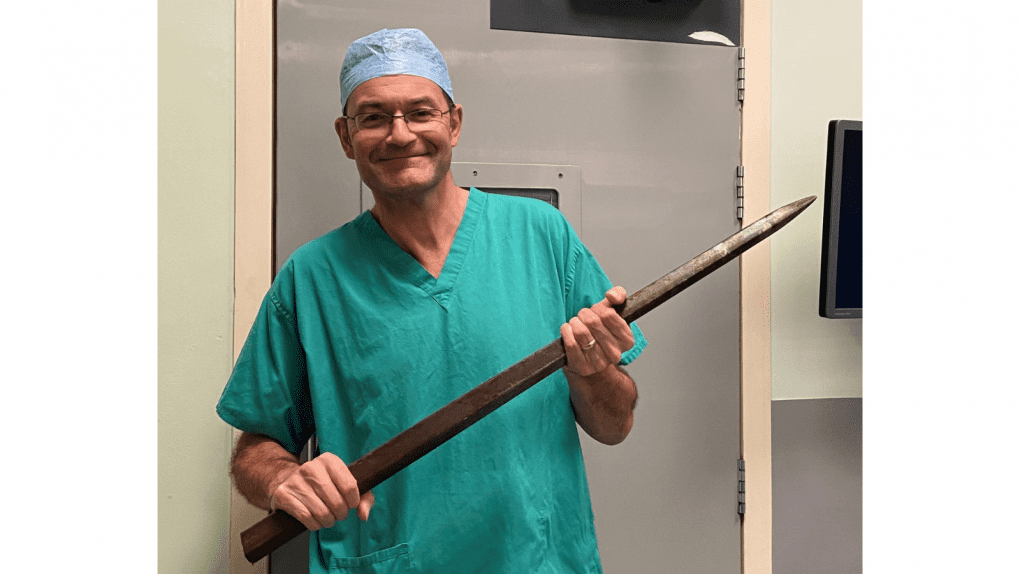
Life-saving surgery at Addenbrooke’s Hospital
Led by expert surgeon Mr Emmanuel Huguet, the surgical teams worked throughout the night to save Jonathan, operating on him for almost seven hours.
Miraculously, the thick steel tine was safely removed, despite being just millimetres from causing life-threatening internal bleeding and damaging vital organs. Just two weeks later, Jonathan was discharged to recover at home, although it took almost five months for his wounds to heal fully. Being a filthy piece of agricultural machinery, the tine also put Jonathan at a high risk of infection, especially as it had punctured his bowels.
Above: Mr Huguet with the forklift tine after it was removed from Jonathan. Credit: CUH Hospitals.
Consultant Liver and Transplant Surgeon at Addenbrooke’s Hospital, Mr Emmanuel Huguet, recalls his experience leading the complex surgery to save Jonathan’s life:
“Upon hearing the description on Mr Willis’ injuries, I was completely taken aback and had to ask for the information to be repeated three times. It seemed near impossible for someone to have survived such injuries as that area of the abdomen is full of overlapping tightly-packed-together organs and very major blood vessels.
“In order to carry out this highly complex surgery, there were approximately 30 people in the operating theatre at one point, including colleagues who held the spike in place from underneath before we were sure it was safe to remove.
“When we finally had everything in place to safely open Mr Willis’ abdomen, we were astounded by the trajectory of the spike. It had transfixed parts of the intestine, but somehow found an incredibly improbable ‘eye of the needle’ line past all the major blood vessels, as well as missing the right kidney, liver, and pancreas. At that point it was possible to safely remove the spike and repair the intestinal injuries.
“Mr Willis was simultaneously very unfortunate to have his injury, and also miraculously lucky that the spike didn’t cause any life-threatening damage to the numerous large blood vessels in its path. To this day, on CT scans, I cannot draw a straight line between the entry and exit points without going through vital structures. The spike must have pushed those vessels out of the way as it advanced.
“Mr Willis’ incredible recovery is down to his amazing composure and courage throughout this ordeal and the amazing team work I witnessed that night at Addenbrooke’s. Many people from different professions in the emergency services – in and out of the hospital – drew on years of experience and know-how to get Mr Willis safely recovered. I found the efficient, focussed, professional performance of everyone involved very moving, as well as the fact that everything was done with gentleness and care in spite of the technicality and urgency of the situation.”
Donate now to help keep our crews flying and saving lives. Thank you for your support.
